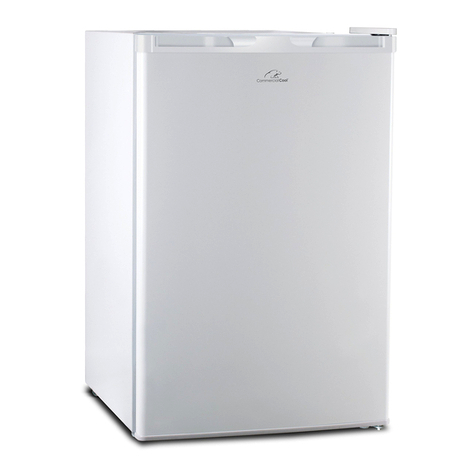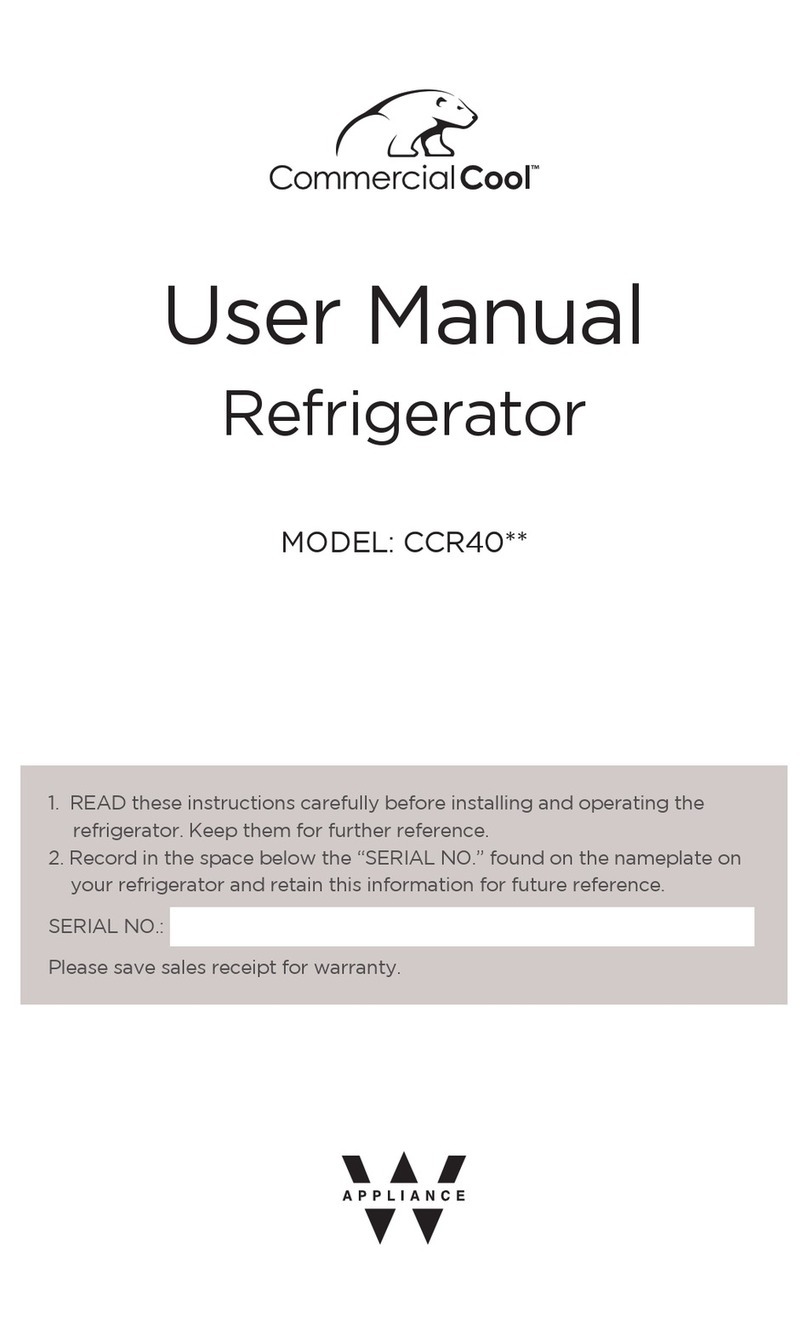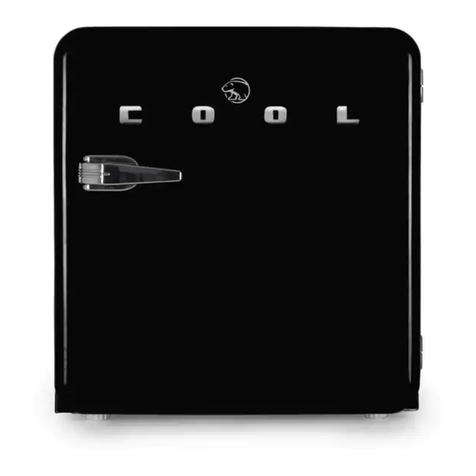
Page 3
IMPORTANT SAFETY INSTRUCTIONS
1. Use this appliance only for its intended purpose as described in this
use and care guide.
2. This refrigerator must be properly installed in accordance with the
installation instructions before it is used. See grounding instructions
in the installation section.
3. Never unplug your refrigerator by pulling on the power cord. Always
grasp the plug rmly and pull straight out from the outlet.
4. Do not operate any appliance with a damaged cord or plug. Return
appliance to the nearest authorized service facility for examination,
repair or adjustment.
5. Unplug your refrigerator before cleaning or before making any
repairs. NOTE: If for any reason this product requires service, we
strongly recommend that a certied technician performs the service.
Component parts shall be replaced with like components and
servicing shall be done by factory authorized service personnel, so
as to minimize the risk of possible ignition due to incorrect parts or
improper service.
6. Do not use any electrical device or any sharp instrument in
defrosting your refrigerator.
7. DANGER – Risk of child entrapment. Before you throw away your
old refrigerator or freezer, take off the doors and leave the shelves in
place so that children may not easily climb inside.
8. After your refrigerator is in operation, do not touch the cold surfaces
in the freezer compartment, particularly when hands are damp or
wet. Skin may adhere to these extremely cold surfaces.
NOTE: If the refrigerator/freezer has been placed in a horizontal or
tilted position for any period of time, wait 24 hours before
plugging the unit in.
SAFETY INFORMATION
DANGER
DANGER - Immediate hazards
which WILL result in severe
personal injury or death
WARNING
WARNING - Hazards or unsafe
practices which COULD result in
severe personal injury or death
CAUTION
CAUTION - Hazards or unsafe
practices which COULD result in
minor personal injury
WARNING
When using electrical appliances, basic safety precautions should always be
followed to reduce the risk of re, electric shock and personal injury
:
READ ALL INSTRUCTIONS BEFORE USING THE PRODUCT


































